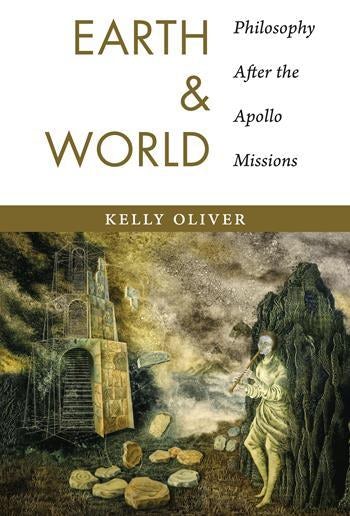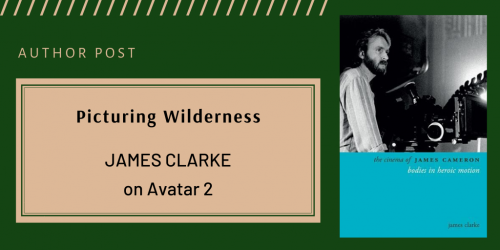A Tale of Two Seminars — A Post by Robert Hanning
It’s sometimes argued that teaching and research (including, by extension, scholarly writing) make strange pedagogical bedfellows, but having taught both undergraduates and graduate students for forty-five years, all the while doing a fair amount of research and writing, I find this a difficult premise to embrace. For me, there has always been a symbiotic relationship between my activities in the classroom, the library stacks, and the study over which my computer (as earlier my yellow legal pad with its sharpened pencils) resides.
My recently published book, Serious Play: Desire and Authority in the Poetry of Ovid, Chaucer, and Ariosto, based on the thirteenth Leonard Hastings Schoff Lectures at Columbia University, offers a prime example of such symbiosis. This extended appreciation of my three favorite pre-modern comic poets had its immediate origin in an unexpected invitation to give the Schoff Lectures in October 2005. More fundamentally, however, the project was gestated in two extraordinary seminars (one often repeated, the other unique and valedictory) that together constituted the summit of my career as a teacher at Columbia. Yet, deeply satisfying as those seminars were, I could never have fully appreciated what they taught me had I not been given the unforeseen opportunity to wrestle their lessons into connected prose.
Of the three poets I discuss in my book, I came in contact only with Chaucer during my years as a student majoring in medieval literature. I first became aware of Ovid and Ariosto as masterful comic writers when I had to teach them—the former in Columbia’s required Great Books course; the latter in a team-taught colloquium on primarily Italian Renaissance texts at Barnard College—and found myself enthralled by their heightened sense (and appreciation) of the ridiculous as a feature of most human affairs (especially the erotic kind).
And there it might have stayed, at the level of fugitive pleasures taken occasionally outside the main stream of my pedagogical duties and scholarly concerns, were it not for—of all things!—Columbia’s Great Uprising of 1968. At one point during that very hectic week, I found myself, as a member of a faculty group attempting to head off violence and to mediate among various antagonistic factions, sharing a ledge outside Low Library (despite its name, Columbia’s administrative center) with my friend David Rosand, an art historian who was to become one of America’s most distinguished exponents of Renaissance and baroque Italian, especially Venetian, painting, but whose sole intent at that moment, like mine, was to prevent physical confrontations between the students occupying Low and others, encircling it, who opposed the “taking” of this and other buildings. It was a situation at once fraught with risk (though not to us) and, in its complex spatial choreography—encompassing Low Library and its ledges, surrounding hedges, and adjoining plaza, almost comically complicated.
As Prof. Rosand and I (both assistant professors at the time) stood guard on that cool spring evening, we began to be nostalgic for our own, less melodramatic and politically parlous undergraduate years at Columbia, especially recalling as a highlight a two-year Colloquium on Important Books in which, under the tutelage of pairs of truly brilliant instructors, we immersed ourselves for two hours every Wednesday evening in literary, historical, and philosophical texts from Homer into the twentieth century. Soon, both during and after the tumultuous days of April and May 1968, we were speaking earnestly of creating a team-taught seminar of our own, in homage to the Colloquium but also re-creating for ourselves as teachers, and with our own disciplinary foci, the pleasures we had experienced as its students. And thus was born, in 1970, our seminar, “Themes from the Art and Literature of the Renaissance.”
We taught that seminar every other year for over a decade, and then, after a hiatus of another decade, returned to it with renewed dedication and pleasure during the last decade of my Columbia career. Although the course had several iterations, our favorite and most visited theme was “Myths of Love,” and it was in that context that I came to understand not only the centrality of Ovid to the Renaissance literary and artistic imagination but also the incredibly rich and enabling relationship between Ovid and Ariosto—both figured centrally in the syllabus of “Myths of Love”—as mediated and complicated by the depiction of Ovidian stories and themes in fifteenth- and sixteenth-century Italian painting, a cross-disciplinary adaption that reaches sublime heights in the poesie, or mythological images, created by Titian for such crowned heads as Alfonso d’Este, the despotic duke of Ferrara and, along with his brother Cardinal Ippolito d’Este, Ariosto’s sometime patron.
Teaching with David Rosand was the experience of a lifetime. His brilliance, wit, and dedication to the highest ideals of both teaching and scholarship were a constant inspiration to me, and that seminar remains my happiest Columbia memory. The intelligence of our students—juniors and seniors from Columbia and Barnard—as well as Prof. Rosand’s example soon inspired me to undertake serious research into both Ovid’s Augustan Rome and Ariosto’s northern Italy, the scene of successive invasions and hence chronic political instability during the late fifteenth and early sixteenth centuries. My increasing (though far from perfect) understanding of the social and political milieux in which these two poets formed, and to which they addressed, their distinctive voices made me a better explicator of their comic mastery when next David and I taught our course.
There remained one problem, however: the time frame we chose for “Themes from the Art and Literature of the Renaissance” prevented me from undertaking comparison among Ovid, Ariosto, and the poet I had most studied, taught, and written about throughout my career: Geoffrey Chaucer, the fourteenth-century Londoner whose dream poems and especially The Canterbury Tales operate at an analogously high level of comic observation and critique. To put these three paragons into conversation with one another and with students capable of responding with insight to them became the zenith of my ambition as a teacher. And so was born, in the fall 2004 semester, my last solo graduate seminar: “Serio ludere: Ovid, Chaucer, and Ariosto.” Sixteen wonderful students helped me to see how, different as they and their respective ages were, the three poets shared a number of central and galvanizing interests, among which the two that finally fascinated us most were the issues of desire and authority (both cultural and political) that inspired them to commentaries on their time and place at once penetrating and hilarious.
Only after teaching this course could I begin to think of writing about my three favorite comic poets in one sustained effort of appreciation and analysis. And only by writing about them—only when, as it were, push came to Schoff the following autumn—could I finally begin to make clear to myself (and, perhaps, to my readers) what wit and wisdom these three great fashionistas of imperial undress have to offer the twenty-first century.





